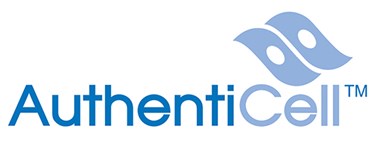AuthentiCell Animal speciation

DNA Barcoding for Cell Line Species Determination
The DNA barcoding process at ECACC will determine the species of a cell line by amplification and sequencing of a portion of the mitochondrial protein-coding genes (Cytochrome Oxidase 1) to distinguish the species of non-human cell lines. Mitochondrial DNA shows 5–10-fold more differences between species than nuclear DNA and very low within-species variation in the variable regions of Cytochrome Oxidase 1 (CO1) with flanking conserved regions that can be used for binding universal primers.

|
Price: £95 per sample. |
Steps for Sample Submission
1. Complete the sample submission form here and the Biohazard Risk Assessment - Cell Lines form for whole cell samples or the Biohazard Risk Assessment form – Nucleic Acids if sending extracted DNA and e-mail the forms and a Purchase Order (PO) to CultureCollections@ukhsa.gov.uk.
2. You will receive a reference number from our service desk for correspondence regarding your order.
Not an existing customer? - Set up an account here.
3. The QC team will review the biohazard risk assessment form to ensure we can safely accept your samples. Please note that for some Genetically Modified Microorganism (GMM) samples there may be a delay as we assess against our internal GMM procedures. Any delay and timeframes will be communicated via the service desk.
4. The QC team will respond via the service desk when the review is complete and if your samples can be accepted
5. Send your samples as per the Sample Preparation and Shipping section below to:
01/200 QC Testing Department,
Culture Collections,
UK Health Security Agency,
Porton Down,
Salisbury,
SP4 0JG, UK
DNA samples
-
DNA should be sent in an sealed centrifuge tube. If an o-ring is not present, then seal the tube lid with Parafilm to avoid leakage or loss of liquid by evaporation
-
DNA should be at a concentration of 10ng/µl and a minimum volume of 50µl
-
DNA should be sent on ice packs
Growing cultures samples
-
Growing cultures should be sent in flasks topped up with medium. The flask cap should be of the non-vented variety and wrapped e.g. in parafilm, to prevent leakage. The flask should then be packed in a leak proof bag or primary container with adequate absorbent material to contain the contents of the flask if there is any breakage or leak
-
Growing cultures for DNA Barcoding (animal cell lines only) can be sent as a viable culture with at least 2x106 cells per container
Frozen cultures samples
-
DNA can be extracted directly from frozen ampoules containing at least 2x106 cells/amp.
PBS washed cell pellets samples
-
Phosphate buffered saline (PBS) washed pellets submitted for DNA Barcoding must contain at least 2x106 cells
